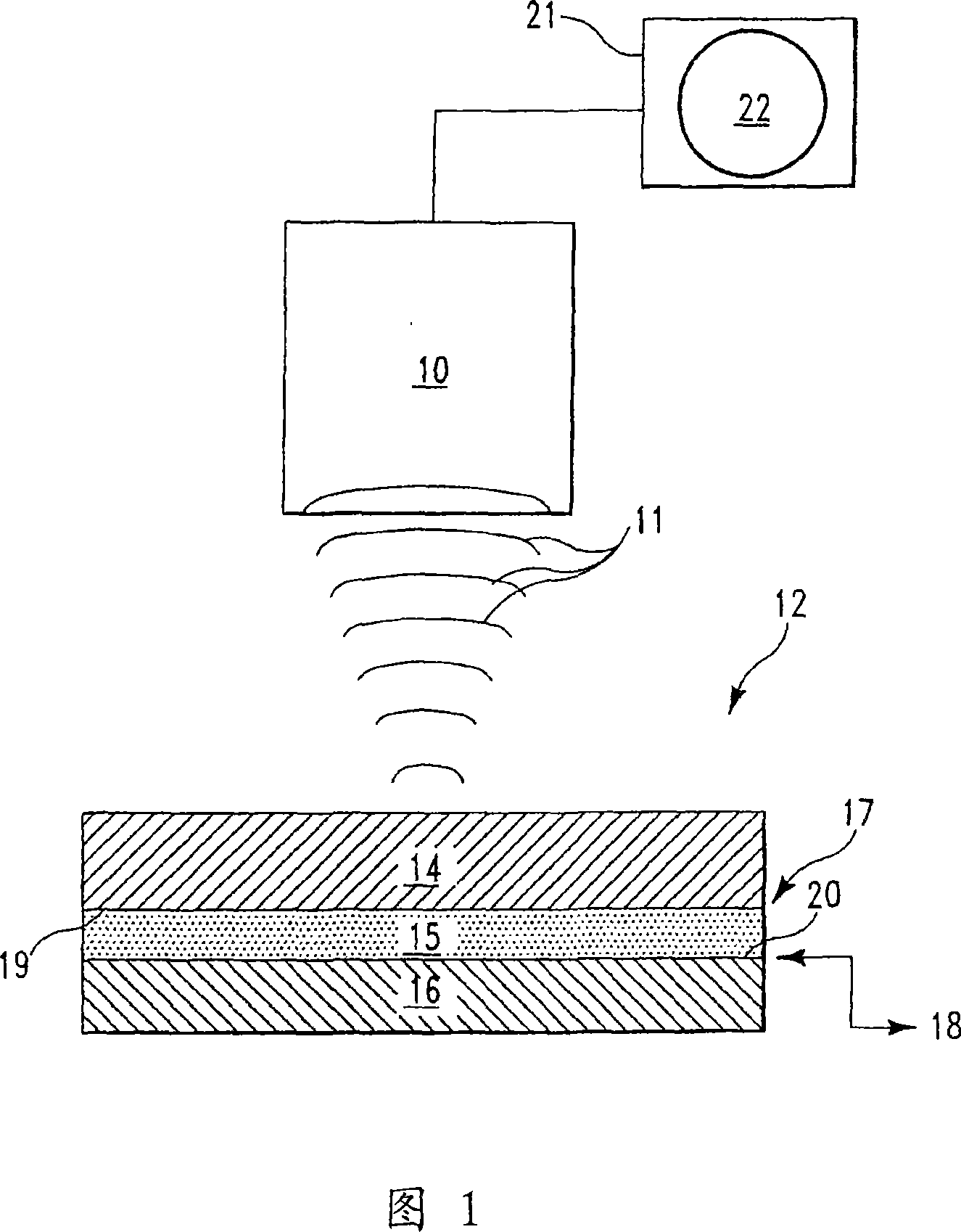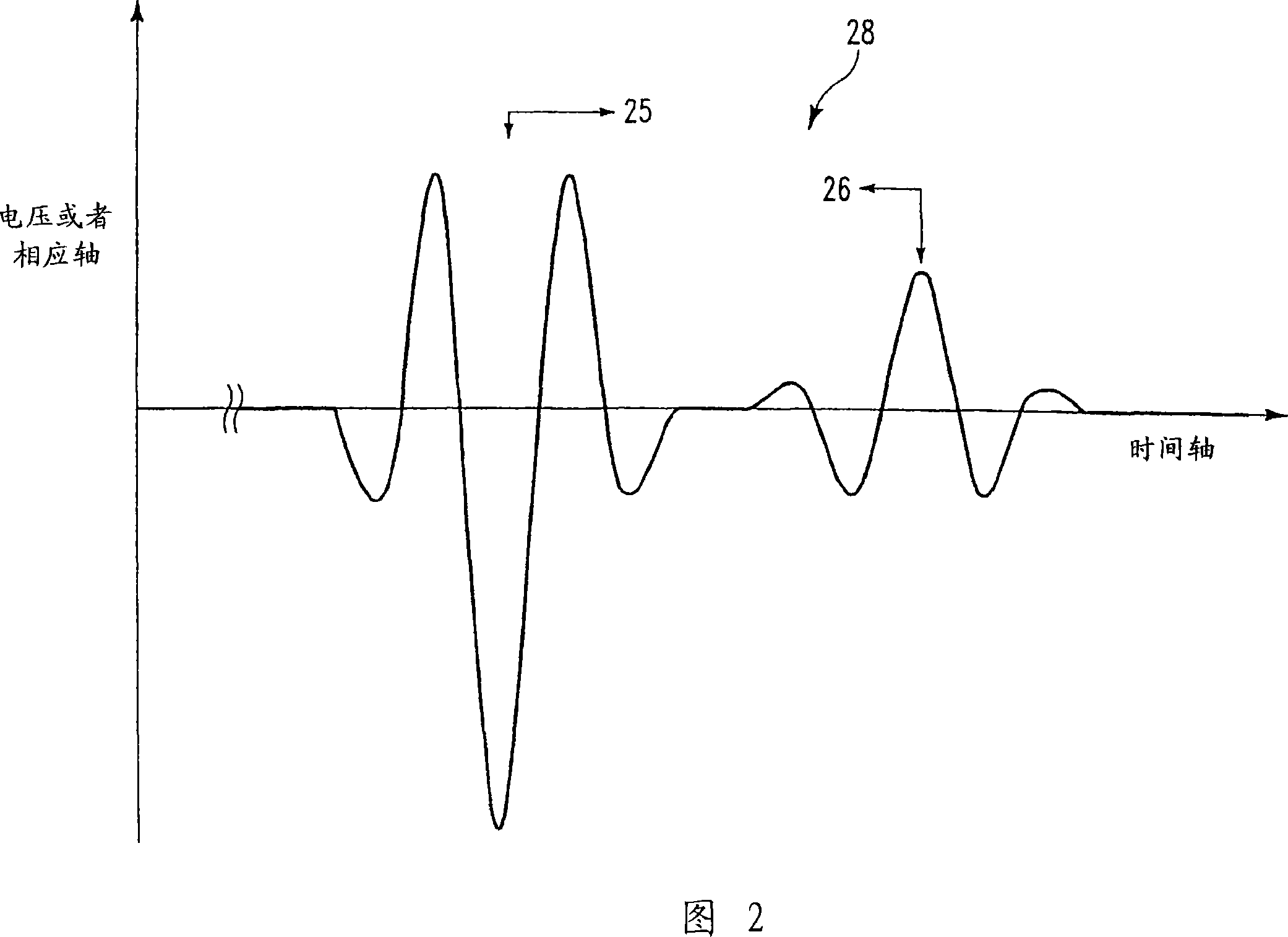Method for measuring thin layers in solid state devices
A solid-state, object-based technology, applied in semiconductor/solid-state device testing/measurement, measuring devices, instruments, etc., can solve problems such as unsatisfactory technology and indistinguishable signals
- Summary
- Abstract
- Description
- Claims
- Application Information
AI Technical Summary
Problems solved by technology
Method used
Image
Examples
Embodiment Construction
[0022] A full understanding of the features and advantages of the present invention may be better obtained by referring to the accompanying drawings, in particular: Figure 1 schematically illustrates an acoustic microscope, applying sound waves to the surface of an object comprising The middle bond layer is fixed to the first material on the second material; Figure 2 shows when a wave from the microscope of Figure 1 is applied to a device with a bond layer thick enough to produce sufficiently separated primary and secondary echoes The resulting primary and secondary echoes; Figure 3 shows the primary and secondary echoes shown in Figure 2 after these echoes have been digitized into corresponding time series; Figure 4 shows the time Figure 5 shows the primary and secondary echoes returned from the object of Figure 1 when the object contains a bonding layer whose thickness is so thin that the primary and secondary echoes overlap each other; Fig. 6 shows the primary and secondary...
PUM
 Login to View More
Login to View More Abstract
Description
Claims
Application Information
 Login to View More
Login to View More - R&D
- Intellectual Property
- Life Sciences
- Materials
- Tech Scout
- Unparalleled Data Quality
- Higher Quality Content
- 60% Fewer Hallucinations
Browse by: Latest US Patents, China's latest patents, Technical Efficacy Thesaurus, Application Domain, Technology Topic, Popular Technical Reports.
© 2025 PatSnap. All rights reserved.Legal|Privacy policy|Modern Slavery Act Transparency Statement|Sitemap|About US| Contact US: help@patsnap.com



